Related Research Articles

The Stone Age was a broad prehistoric period during which stone was widely used to make stone tools with an edge, a point, or a percussion surface. The period lasted for roughly 3.4 million years and ended between 4,000 BC and 2,000 BC, with the advent of metalworking. It therefore represents nearly 99.3% of human history. Though some simple metalworking of malleable metals, particularly the use of gold and copper for purposes of ornamentation, was known in the Stone Age, it is the melting and smelting of copper that marks the end of the Stone Age. In Western Asia, this occurred by about 3,000 BC, when bronze became widespread. The term Bronze Age is used to describe the period that followed the Stone Age, as well as to describe cultures that had developed techniques and technologies for working copper alloys into tools, supplanting stone in many uses.

A hand axe is a prehistoric stone tool with two faces that is the longest-used tool in human history. It is made from stone, usually flint or chert that has been "reduced" and shaped from a larger piece by knapping, or hitting against another stone. They are characteristic of the lower Acheulean and middle Palaeolithic (Mousterian) periods, roughly 1.6 million years ago to about 100,000 years ago, and used by Homo erectus and other early humans, but rarely by Homo sapiens.

Acheulean, from the French acheuléen after the type site of Saint-Acheul, is an archaeological industry of stone tool manufacture characterized by the distinctive oval and pear-shaped "hand axes" associated with Homo erectus and derived species such as Homo heidelbergensis.

The Oldowan was a widespread stone tool archaeological industry (style) in prehistory. These early tools were simple, usually made with one or a few flakes chipped off with another stone. Oldowan tools were used during the Lower Paleolithic period, 2.9 million years ago up until at least 1.7 million years ago (Ma), by ancient Hominins across much of Africa. This technological industry was followed by the more sophisticated Acheulean industry.
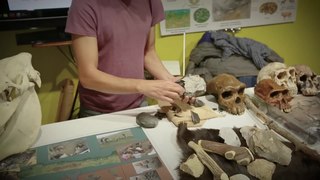
In the archaeology of the Stone Age, an industry or technocomplex is a typological classification of stone tools.
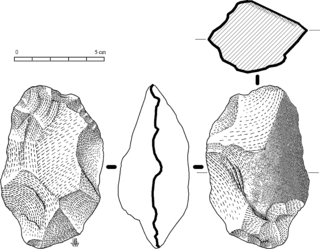
Abbevillian is a term for the oldest lithic industry found in Europe, dated to between roughly 600,000 and 400,000 years ago.
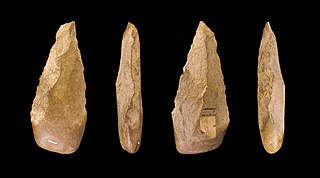
The Lower Paleolithic is the earliest subdivision of the Paleolithic or Old Stone Age. It spans the time from around 3.3 million years ago when the first evidence for stone tool production and use by hominins appears in the current archaeological record, until around 300,000 years ago, spanning the Oldowan and Acheulean lithics industries.

The Levallois technique is a name given by archaeologists to a distinctive type of stone knapping developed around 250,000 to 300,000 years ago during the Middle Palaeolithic period. It is part of the Mousterian stone tool industry, and was used by the Neanderthals in Europe and by modern humans in other regions such as the Levant.
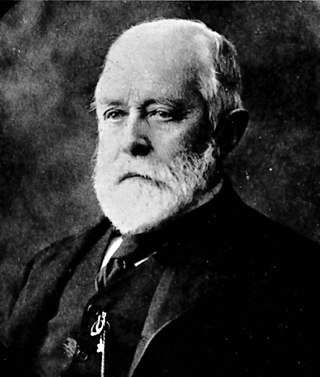
Robert Bruce Foote was a British geologist and archaeologist who conducted geological surveys of prehistoric locations in India for the Geological Survey of India. For his contributions to Indian archaeology, he is called the father of Indian prehistory. He discovered the site of Attirampakkam, a Madrasian culture.

Didwana serves as the temporary district headquarters for Didwana-Kuchaman district of Rajasthan, India. Known as the lion gateway of Marwar and the archway of Merta, it is mentioned in puranic texts as Abhanagri and Upakashi, and is situated on the northern side of Didwana Salt lake. It was administered as a tehsil of Nagaur district before being notified as a district. The people of Didwana speak the Rajasthani language Marwadi, a dialect in the Indo-Aryan language family, which is similar to Hindi.

In archaeology, a cleaver is a type of biface stone tool of the Lower Palaeolithic.

The South Asian Stone Age covers the Palaeolithic, Mesolithic and Neolithic periods in the Indian subcontinent. Evidence for the most ancient Homo sapiens in South Asia has been found in the cave sites of Cudappah of India, Batadombalena and Belilena in Sri Lanka. In Mehrgarh, in western Pakistan, the Neolithic began c. 7000 BCE and lasted until 3300 BCE and the Chalcolithic and early Bronze Age. In South India, the Mesolithic period lasted until 3000 BCE, and the Neolithic period until c. 1000 BCE, followed by a Megalithic transitional period, mostly skipping the Bronze Age. The Iron Age in India began roughly simultaneously in North and South India, around c. 1200 to 1000 BCE.

Ganj Par is a Lower Paleolithic site located in the Gilan province in northern Iran.
The prehistory of the Levant includes the various cultural changes that occurred, as revealed by archaeological evidence, prior to recorded traditions in the area of the Levant. Archaeological evidence suggests that Homo sapiens and other hominid species originated in Africa and that one of the routes taken to colonize Eurasia was through the Sinai Peninsula desert and the Levant, which means that this is one of the most occupied locations in the history of the Earth. Not only have many cultures and traditions of humans lived here, but also many species of the genus Homo. In addition, this region is one of the centers for the development of agriculture.
The Soanian culture is a prehistoric technological culture from the Siwalik Hills, Pakistan. It is named after the Soan Valley in Pakistan.
Riwat is a Paleolithic site in Punjab, northern Pakistan. Another site, called Riwat Site 55, shows a later occupation dated to around 45,000 years ago.

The history of cave paintings in India or rock art range from drawings and paintings from prehistoric times, beginning in the caves of Central India, typified by those at the Bhimbetka rock shelters from around 10,000 BP, to elaborate frescoes at sites such as the rock-cut artificial caves at Ajanta and Ellora, extending as late as 6th–10th century CE.
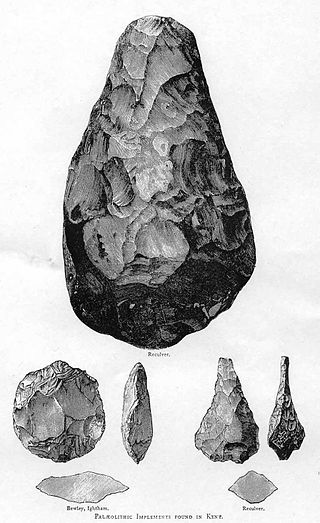
The following outline is provided as an overview of and topical guide to prehistoric technology.
In archaeology, Fauresmith industry is a stone tool industry that is transitional between the Acheulian and the Middle Stone Age. It is at the end of the Acheulian or beginning of the Middle Stone Age. It is named after the town of Fauresmith in South Africa. The Fauresmith is found at a number of other archaeological sites such as Wonderwerk Cave and Kathu Pan where it is potentially dated to at least 420,000 years ago. The Fauresmith consists of Middle Stone Age technology such as blades, points and prepared core technology as well as retaining handaxes from the Acheulian. The type sites are Brakfontein 321 and Riverview Estates Site VI. The Fauresmith culture shows Levalloisean influence, with hand-axes and flakes with faceted striking platforms. It is largely in the similar period with the Sangoan industry.
Attirampakkam, or Athirampakkam is a village near river Kortallaiyar located 60 kilometers away from Chennai, Tamil Nadu, India. The oldest stone tools in India were discovered near the village, which became the type site for the Madrasian culture.
References
- ↑ Armand, J (1985). "The Emergence of the Handaxe Tradition in Asia, with special reference to India". In V. N. Misra, Peter S. Bellwood (ed.). Recent advances in Indo-Pacific prehistory: proceedings of the international symposium held at Poona, December 19-21, 1978. BRILL. pp. 3–. ISBN 978-90-04-07512-2 . Retrieved August 24, 2011.
- 1 2 Avari, Burjor (5 June 2007). India, the Ancient Past: a history of the Indian sub-continent from c. 7000 BC to AD 1200. Routledge. pp. 25–. ISBN 978-0-415-35616-9 . Retrieved 16 October 2011.
- 1 2 Kenneth Oakley (30 April 2007). "Paleolithic Cultures in Asia". Frameworks for Dating Fossil Man. Transaction Publishers. pp. 229–. ISBN 978-0-202-30960-6 . Retrieved 24 August 2011.
- ↑ Upinder Singh (1 September 2008). A History of Ancient and Early Medieval India: From the Stone Age to the 12th Century. Pearson Education India. pp. 73–. ISBN 978-81-317-1120-0 . Retrieved 24 August 2011.
- ↑ Pappu, Shanti; Gunnell, Yanni; Akhilesh, Kumar; Braucher, Régis; Taieb, Maurice; Demory, François; Thouveny, Nicolas (2011-03-25). "Early Pleistocene Presence of Acheulian Hominins in South India". Science. 331 (6024): 1596–1599. Bibcode:2011Sci...331.1596P. doi:10.1126/science.1200183. ISSN 0036-8075. PMID 21436450. S2CID 206531024.
- ↑ Reddy (1 December 2006). Indian Hist (Opt). Tata McGraw-Hill Education. pp. 1–. ISBN 978-0-07-063577-7 . Retrieved 16 October 2011.
- 1 2 "Paleolithic Period in India: The Soan and Madras Culture". Your Article Library. 2014-06-20. Retrieved 2024-05-20.
- ↑ Sen, Sailendra Nath (1 January 1999). Ancient Indian History and Civilization. New Age International. pp. 23–. ISBN 978-81-224-1198-0 . Retrieved 16 October 2011.